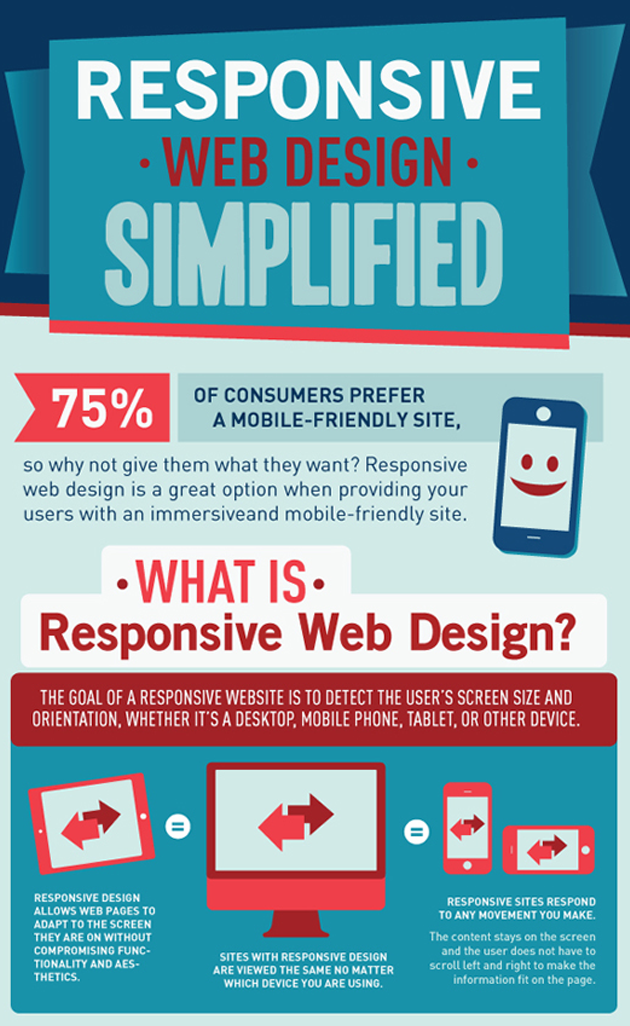Keen To Uncover How Website Layout Has Changed With Time? Dive Into The Advancement From Simpleness To User-Focused Experiences.
Keen To Uncover How Website Layout Has Changed With Time? Dive Into The Advancement From Simpleness To User-Focused Experiences.
Blog Article
Writer-Lamb Bowles
In the past, sites were straightforward and focused on info. Navigation was direct, and layout was for desktop computers. Now, customer experience is vital. Information overviews styles for easy navigating. Responsive formats fit various tools. Today, dark mode reduces stress, and minimalist menus improve navigating. Interactive attributes engage individuals, and bold visuals attract attention. AI assimilation enhances interaction. See how style has actually evolved to improve your on-line trip.
Very Early Days of Web Design
In the early days of website design, simpleness reigned supreme. Internet sites were fundamental, with limited shades, typefaces, and layouts. The emphasis got on providing info instead of showy visuals. Users accessed the web via slow dial-up connections, so rate and functionality were vital.
Navigation food selections were straightforward, generally situated on top or side of the page. Websites were developed for desktop computers, as mobile surfing had not been yet widespread. Material was king, and developers prioritized simple readability over complex layout components.
HTML was the primary coding language used, and designers needed to work within its restrictions. Computer animations and interactive features were very little contrasted to today's criteria. Websites were static, with little dynamic web content or tailored individual experiences.
Surge of User-Focused Layout
With the evolution of website style, a change in the direction of user-focused layout concepts has actually come to be progressively popular. Today, developing internet sites that focus on customer experience is critical for involving site visitors and achieving service objectives. User-focused design entails recognizing the requirements, preferences, and actions of your target audience to customize the website's layout, content, and features accordingly.
Developers now conduct extensive study, such as user surveys and use testing, to collect understandings and responses directly from users. This data-driven method assists in producing instinctive navigation, clear calls-to-action, and visually attractive user interfaces that reverberate with visitors. By positioning the user at the center of the design procedure, websites can supply a more individualized and pleasurable experience.
Responsive design has actually additionally emerged as a crucial aspect of user-focused layout, making certain that web sites are enhanced for different tools and screen dimensions. This versatility improves availability and functionality, accommodating the varied means users engage with websites today. Fundamentally, the surge of user-focused design signifies a shift towards developing digital experiences that prioritize the needs and expectations of completion customer.
Modern Trends in Web Design
Discover the latest fads forming website design today. Learn Alot more is dark setting layout, providing a smooth and modern look while reducing eye stress in low-light environments. Another vital trend is minimalist navigating, streamlining menus and enhancing user experience by concentrating on essential elements. Integrating micro-interactions, such as animated switches or scrolling impacts, can produce a much more engaging and interactive web site. Responsive layout remains vital, making sure seamless individual experiences throughout numerous devices. Furthermore, making use of bold typography and unbalanced designs can add visual rate of interest and draw attention to particular web content.
Incorporating AI innovation, like chatbots for customer assistance or customized referrals, boosts customer involvement and simplifies procedures. https://www.searchenginejournal.com/9-local-seo-tips-from-top-experts/445229/ has additionally end up being a considerable trend, with designers prioritizing inclusive layout practices to accommodate diverse customer needs. Welcoming sustainability by optimizing website efficiency for rate and efficiency is another arising fad in website design. Collaborating with individual comments and information analytics to repeat and boost design continuously is essential for remaining relevant in the ever-evolving digital landscape. By accepting these contemporary fads, you can develop an aesthetically enticing, easy to use web site that resonates with your target market.
Final thought
As you assess the development of website style from the very early days to currently, you can see exactly how user-focused design has become the driving pressure behind modern-day trends.
Embrace the trip of adjustment and adjustment in website design, always maintaining the customer experience at the center.
Remain current with the most recent patterns and innovations, and never quit advancing your strategy to produce aesthetically stunning and user-friendly sites.
Develop, adjust, and develop - the future of website design remains in your hands.
